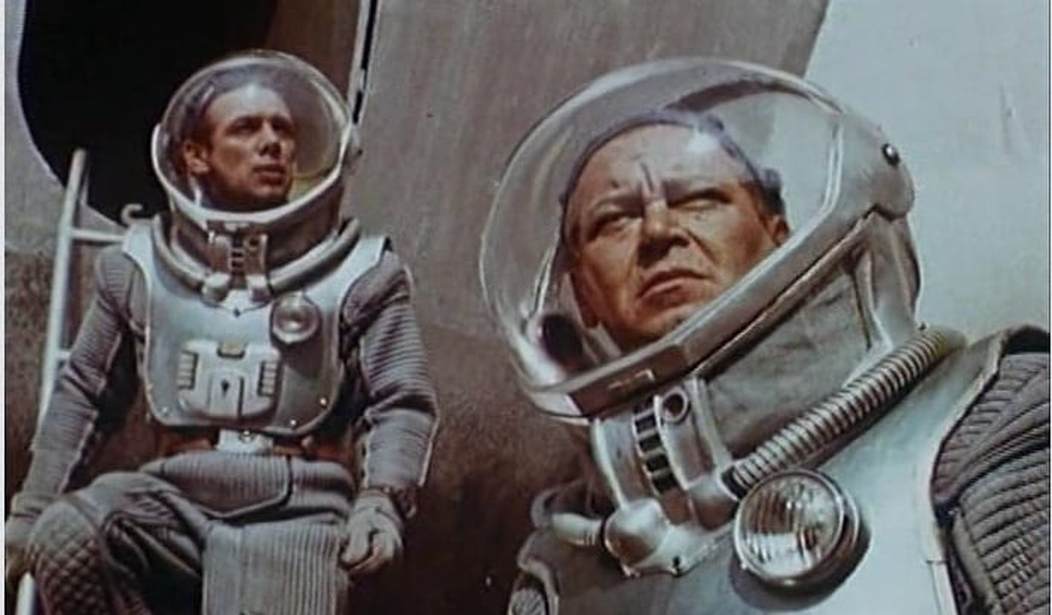What is wrong with Hollywood? Today’s movie makers seem incapable of delivering a first-class film about the worlds beyond earth. It all started with Jupiter Ascending (2015), a gorgeous, but unwatchable space opera, and it was all pretty much downhill after that. In recent months, we were assaulted with Life (2017). If there was an award for best preview followed by worst movie, this film would win it. Then, there was the disappointing and dreary sequel, Alien: Covenant (2017). It was followed by the incredibly boring Valerian and the City of a Thousand Planets (2017). Some have high hopes for Avatar 2: Return to Pandora (2018). I am not one of them.
What went wrong?
In the 1960s, America invented space mania. Now, here we are again, getting all excited about space travel. Heck, Vice President Pence has even vowed to “make the American space program great again.” He promised (channeling his inner William Shatner) we would go to places “our children’s children can only imagine.”
Yet, our space movies are getting lamer.
Since the dawn of the Space Age, the cinema has helped shape in our imagination the possibilities of the world beyond earth. It is worth revisiting some of these classic films—if for no other reason than to see how little progress we have made.
Here are eight films that inspire us not just to greater deeds in the great beyond, but also maybe to come up with some better movies here at home.
8. Milcząca Gwiazda (1960)
A Polish/East German film that has an international crew on the Soviet spaceship Cosmostrator traveling to another planet in the hopes of making contact with an alien civilization. The film was re-edited, dubbed into English, and released under the title First Spaceship on Venus. While the special effects and set design were awesome for the times, what distinguishes the movie was inserting a plot that was more than just fighting space bugs. The crew finds Venus to be both a dead and deadly planet. The plot is laced with warnings about environmental degradation and the devastation of nuclear war. The U.S. television series Star Trek (1966-1969) would later adopt this approach of fusing science fiction cinema with contemporary social issues.
7. Planeta Bur (1962)
Made in living “Sovcolor,” this Soviet science fiction film (Planet of Storms) found an intrepid team of cosmonauts exploring Venus, which is apparently inhabited by dinosaurs and man-eating plants (not unlike the voracious vegetable from the 1959 American movie The Angry Red Planet). This film is notable for introducing the robot as part of the space crew plot twist. It was also well-known to American drive-in movie audiences who likely had no clue that they were watching a film made under the shadow of the Kremlin. B-movie master Roger Corman bought the U.S. rights and had the film dubbed and recut to make two different films with different plots—Voyage to a Prehistoric Planet (1965) and Voyage to the Planet of Prehistoric Women (1968). The Corman movies are a case study in how to make a watchable film worse.
6. Ikarie XB-1 (1963)
https://www.youtube.com/watch?v=fJZAlSKc32I
This Czech sci-fi cinematic effort was dubbed and released in the U.S. as The Voyage to the End of the Universe. It is widely regarded as one of the best science fiction films to come out of the Eastern Bloc countries. Stanley Kubrick screened the movie while he was developing his space epic—2001: A Space Odyssey. Ikarie XB-1 encounters a number of adventures and trials in its journey to the end of the known universe. In the English version, a “twist” ending was added. At the end of space and time, the crew discovers a green planet—Earth.
5. La Planète Sauvage (1963)
This animated French film released in the U.S. as Fantastic Planet (1973) is anything but a Disney-like movie for kids. Visually stunning and surreal, the plot tells the story of a rebellion by humanoids who live on a bizarre planet populated by technologically advanced blue giants with a weird sense of fun. With strong undertones savaging the evils of racism, the film blends allegory and science fiction into a compelling movie-going experience.
4. Gandahar (1988)
The director of Fantastic Planet, René Laloux, also made this animated otherworld film. It was released for American audiences as The Light Years. The planet Gandahar is invaded by killer robots from the future. Like Fantastic Planet, this movie includes bizarre creatures and ethereal landscapes. It is a reminder that it doesn’t take big budget CGI to make our imagination take flight. It just requires a creative, intelligent filmmaker.
3. Pitch Black (2000)
What all the movies on this list have in common is combining an inspired mind with solid filmmaking. Despite its recent many missteps, in the past, Hollywood has also proven it is capable of mastering this formula. One the best efforts in recent years tells the tale of a misfit group of space castaways who discover a terrible secret when the planet they land on shifts from perpetual day to unending night. Pitch Black features intelligent, unpredictable characters along with a fast-moving plot and scary monsters—everything you would hope to find on another planet.
2. Jodorowsky’s Dune (2013)
A number of sci-fi films, including several on this list, were inspired by novels—since the days of Jules Verne, the great laboratory of imagining what lies beyond earth’s atmosphere. The Holy Grail of the enterprise that turned printed science fiction into film remains Frank Herbert’s classic book Dune (1965). The 1984 big-budget effort to bring Herbert’s alien world to the screen was a disaster—a worse blunder than Valerian and the City of a Thousand Planets if that is possible. Cult film director Alejandro Jodorowsky made an attempt to produce his cinematic version of the story. He spectacularly failed. Instead, he made this brilliant documentary about the film he would have made if he could have made a film.
1. 2001: A Space Odyssey (1968)
There is a reason this movie about a voyage to a moon of Jupiter is on every best picture list. It is the most important and iconic science fiction flick ever made—unmatched in its capacity to inspire us to aspire to know what is really out there.









Join the conversation as a VIP Member